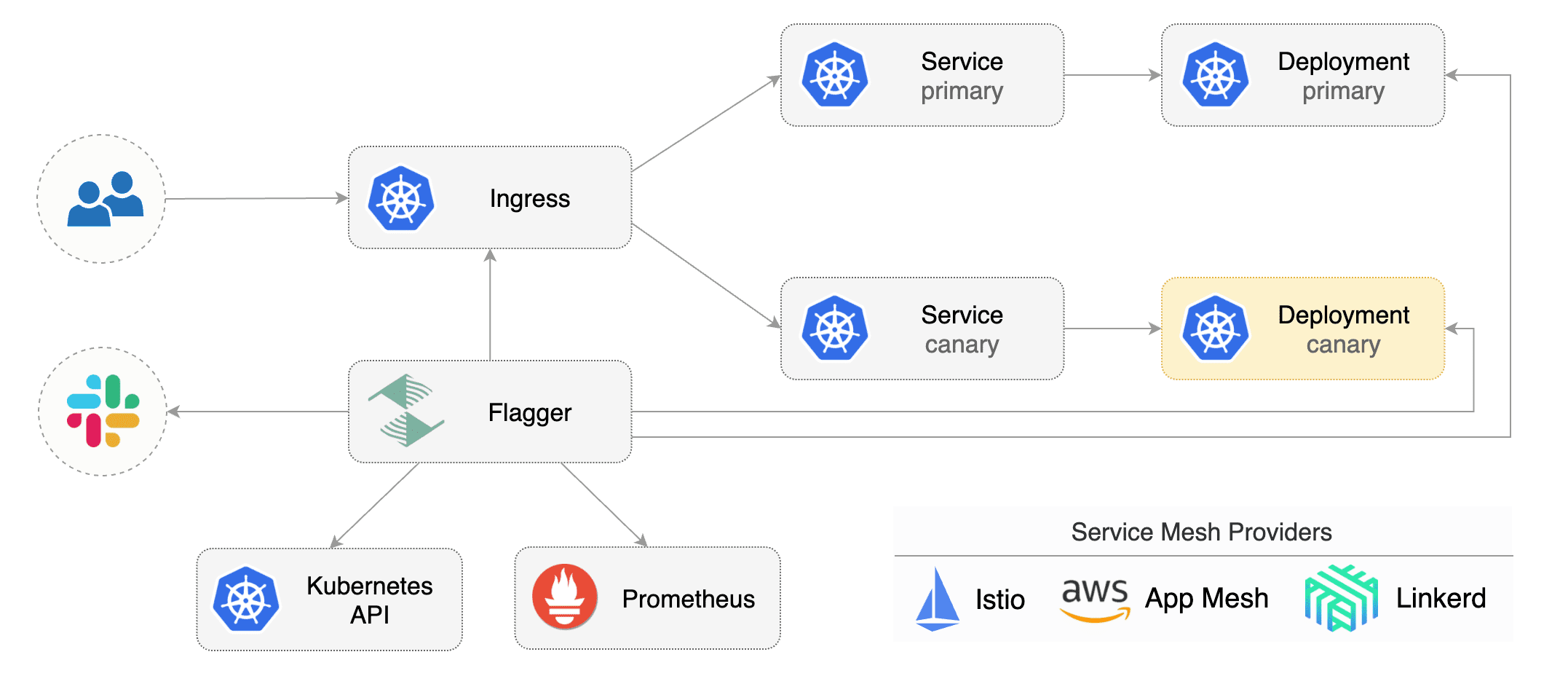|
|
||
|---|---|---|
| .. | ||
| install | ||
| tutorials | ||
| usage | ||
| README.md | ||
| SUMMARY.md | ||
| dev-guide.md | ||
| faq.md | ||
| how-it-works.md | ||
README.md
| description |
|---|
| Flagger is a progressive delivery Kubernetes operator |
Introduction
Flagger is a Kubernetes operator that automates the promotion of canary deployments using Istio, Linkerd, App Mesh, NGINX, Contour or Gloo routing for traffic shifting and Prometheus metrics for canary analysis. The canary analysis can be extended with webhooks for running system integration/acceptance tests, load tests, or any other custom validation.
Flagger implements a control loop that gradually shifts traffic to the canary while measuring key performance indicators like HTTP requests success rate, requests average duration and pods health. Based on analysis of the KPIs a canary is promoted or aborted, and the analysis result is published to Slack or MS Teams.
Flagger can be configured with Kubernetes custom resources and is compatible with any CI/CD solutions made for Kubernetes. Since Flagger is declarative and reacts to Kubernetes events, it can be used in GitOps pipelines together with Flux CD or JenkinsX.
This project is sponsored by Weaveworks
